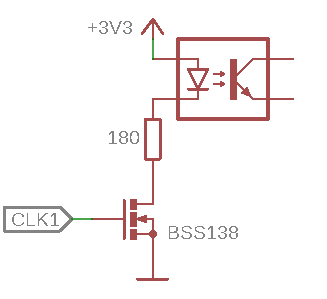I got this problem where a inverted pulse of 8µs has to be amplified because the pulse only delivers 10-100µA. The signal will be transmitted over a optocoupler and sent to a mc that interrupts upon receiving the signal. Delay from sensor to mc is acceptable down to 100µs and a longer pulse is acceptable. The ampere meter fuse was blown the ampere was calculated like:
(Vin-Vled)/R=(1.7V-1.2V)/5600=90µA
The reason why Vin was 1.7V was because the current limiter in the pulse generator was pulling the voltage down. With no resistor at all the voltage was roughly 3.3V.
This current has to be amplified to atleast 10mA, but preferably 20mA at 3.3V from the pulse generator to gnd.
Circuit without amplifiers

simulate this circuit – Schematic created using CircuitLab
I tried using a mosfet but the speed was to slow. I also tried the same setup with a npn transistor:

By adding the npn we got the current higher, but only up to 1mA and the voltage was still lower than 3.3V on the pulse generator.
How would you fix this? Should i add another npn, limit the current through the first one to maintain 3.3V? Use a NOT gate? Find another npn with higher current gain? Also i do not want it to be complex since i need to make roughly 20 of these for the pcb.



